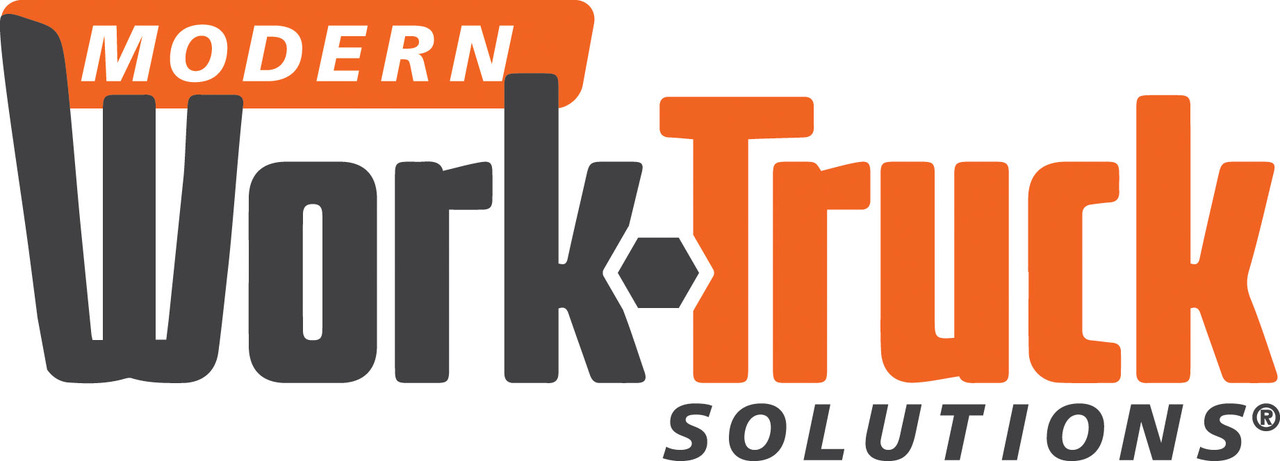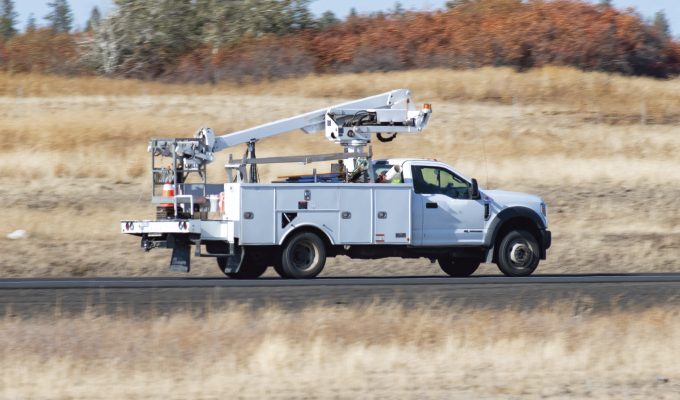Vehicles in a typical vocational fleet are essential tools that employees rely on to support business operations and serve customers. Extended or recurring downtime due to ongoing maintenance issues can quickly impact on a fleet’s productivity, often resulting in lost revenue and frustrated customers.
A strategic maintenance program executed with meticulous attention to detail is key to maximizing vehicle uptime. This can make a significant difference, potentially saving thousands of dollars over a vehicle’s lifecycle in terms of operating costs and productivity. Central to the success of any maintenance program is an effective parts sourcing solution, particularly for essential powertrain components like engines and transmissions.
For many vocational fleet operators, the best value for their business may come from parts or components that minimize downtime rather than those with the lowest invoice cost. To help you better understand the often-hidden differences between original equipment manufacturers (OEM) parts and the non-OEM alternatives, let’s look at why the true value of a centralized, OEM-focused parts sourcing solution transcends the invoice cost.
UNDERSTANDING THE AVAILABLE OPTIONS
When a truck’s engine or transmission needs replacement, fleet operators can choose between OEM parts and aftermarket reverse-engineered (non-OEM) alternatives. Both options have their pros and cons, but for most fleets, genuine OEM powertrain units strike the ideal balance of quality, reliability, and long-term value.
OEM powertrain units are built to withstand the rigorous demands of commercial use, helping to control operating expenses and minimize vehicle downtime. This allows fleet personnel to focus on strategic initiatives rather than the administrative burden associated with repeated component failures and ongoing maintenance issues.
PROPRIETARY OEM ENGINEERING
Manufacturers like Ford, General Motors, and Stellantis create proprietary powertrain blueprints through a lengthy and rigorous product development process that is spearheaded by industry-leading engineers. These comprehensive designs encompass the exact specifications, material composition, and original tolerances required to ensure proper performance. Since this intellectual property is not available to other companies, reverse-engineered alternatives may be imprecise, failing to meet the original specifications of the OEM manufacturers.
OEM manufacturers constantly strive to improve performance, maximize efficiency, and enhance reliability. With these goals in mind, OEMs push the limits of design complexity and mechanical operation, with manufacturing tolerances often razor-thin and nearly impossible to accurately replicate through reverse-engineering.
Another benefit of OEM powertrain products is that all units are engineered to the exact specifications required for each make, model, and year, ensuring a precise fit and proper functionality. This application-specific fit maximizes vehicle performance, efficiency, and reliability, helping to minimize the long-term cost of ownership. OEM manufacturers also incorporate the latest product updates and engineering enhancements – updates and enhancements accessible exclusively to OEM engineers.
PROPRIETARY OEM REMANUFACTURING PROCESS
Delivering reliable powertrain components relies on the remanufacturing process. As vehicle technology evolves, so must engineering procedures. High-quality components and proprietary technology are crucial to the remanufacturing process. Materials used in this process undergo extensive inspection, and most OEM remanufacturers discard cores – the used components that are to be remanufactured – with any potential issues. Conversely, aftermarket suppliers could use old or potentially damaged components that OEMs and their quality controls would typically reject.
The remanufacturing process also employs the same machinery and procedures used during the original manufacturing process, aiming to return each unit to like-new condition that meets original OEM specifications. This attention to detail extends to the sub-components used during manufacturing.
OEM remanufacturers use new, OEM-approved sub-components rather than less expensive aftermarket alternatives. These OEM powertrain assemblies include new components such as valves, springs, and gaskets to help optimize performance and efficiency. Most reverse-engineered alternatives typically reuse old components that are worn and less dependable. Additionally, through a centralized, OEM-focused parts sourcing partner, you also have convenient access to complementary parts – intake manifolds, transfer cases, differentials – that can be replaced in conjunction with the engine or transmission to further optimize performance and ensure longevity of the entire powertrain system.
It is also important to note that each production factory is subject to stringent OEM testing procedures, with most units tested on a dynamometer or computer-controlled simulators to verify performance before shipping. These quality control standards are derived from extensive laboratory and road testing during the initial R&D process, ensuring maximum efficiency and performance.
THE VALUE OF OEM POWERTRAIN UNITS
A common misconception in the fleet industry is that OEM powertrain units typically cost more than their aftermarket alternatives. However, this is often not the case, especially when considering the additional components and labor time required to install the aftermarket unit. When assessing the cost of a replacement powertrain unit like an engine or transmission, it is crucial to examine the total value of the OEM product rather than just the one-time unit cost.
Many OEM powertrain units include necessary subcomponents – oil pan, water pump, oil filter – and are ready for installation. In contrast, aftermarket units often lack these items. While these subcomponents may be inexpensive individually, together, they quickly add to the overall cost of a unit.
The typical aftermarket reversed-engineered assembly arrives stripped of these vital parts, leading to increased labor time and additional costs for parts that need to be purchased or swapped from the replacement unit. Most repair facilities estimate approximately three hours to properly prepare a stripped engine for final installation. With an average labor rate of $100 per hour, this adds an additional $300 just to prepare the unit for installation, along with the additional vehicle downtime and lost productivity.
Another important factor to consider is that both OEM and reverse engineered aftermarket units are subject to a core deposit, which is refunded when the core is returned. The aftermarket core is often inspected for damage which can be charged back to the customer, potentially creating an unexpected additional cost. However, most OEM manufacturers offer a no-risk core policy – providing full core credit – regardless of damage or the quality of the returned core. This no-risk return policy ensures accurate pricing for engines and transmission replacements, avoiding surprise core deductions on the final invoice. The typical OEM core policy only requires that the same unit be returned – like-for-like – in the packaging that the replacement unit was delivered in, after being drained of all fluids.
INDUSTRY-LEADING WARRANTY AND SUPPORT
OEM engines and transmissions must meet strict performance and reliability standards. In the unlikely event that a unit fails, it is covered by industry-leading warranties and customer support from the manufacturer, ensuring quick resolution. These OEM warranties allow fleet operators to use either the original service location or any dealership nationwide for repairs, minimizing downtime.
In contrast, aftermarket reverse-engineered units often have complicated warranty processes with significant restrictions. These suppliers typically limit warranty services to specific repair facilities, which can lead to additional downtime and lost productivity if the preferred vendor is far away or unable to complete the repair promptly.
Another stark difference in warranty coverage is the labor rate honored by OEM powertrain manufacturers. Most aftermarket manufacturers limit the labor rate to either a flat price or a pre-approved rate that is often well short of a repair facility’s actual cost. Most OEM manufacturers will honor the shop’s posted labor rate, fortifying positive relationships with vendors and translating into better overall service for the fleet and its drivers.
THE IMPACT FOR FLEETS – COST VS. VALUE
In today’s economic environment, fleet managers face continually shrinking resources and are being challenged more than ever to do more with less. Most fleet managers face unrelenting pressure to identify cost-saving opportunities while simultaneously increasing efficiencies. As a result, most large vocational fleets will benefit from a centralized, OEM-focused powertrain sourcing program for their engines and transmissions that helps to minimize their administrative burden while also delivering consistent pricing, nationwide availability, and best-in-class warranties.
The ideal solution for most vocational fleets is to commit to a comprehensive OEM powertrain strategy that helps to minimize the long-term cost of ownership and maximize vehicle uptime, optimizing fleet vehicles by keeping them on the road to support their business functions and drive value to the company’s bottom line.
for more information
Holman’s powertrain division leverages fleet management expertise and strong OEM partnerships to source critical components for large fleet operators. By simplifying the sourcing process, Holman’s customers can replace engines, transmissions, and other vital components quickly to minimize downtime. To learn more, visit www.holman.com/powertrain.




